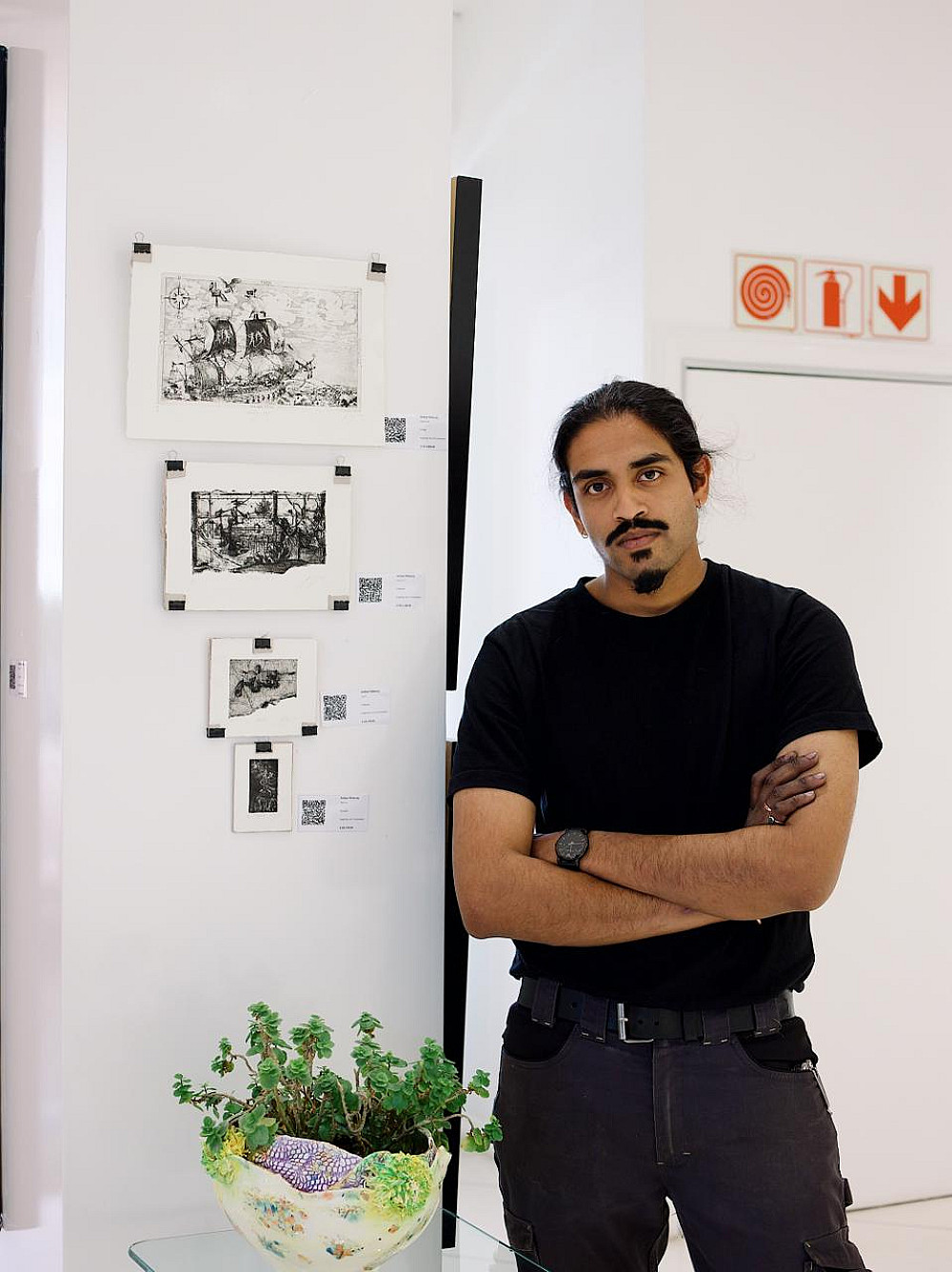
Published 12 November 2025 in Gallery Conversations
Interview by Petra Peppler
Joshua Maharaj
1. Your work explores the traces of history embedded in contemporary South African spaces. In relation to this exhibition’s theme, how do you define or interpret your own kind of “scape” for instance, a memory-scape or history-scape, within your printmaking practice?
Both of these terms can be used to describe the work I aim to capture memory, but also to make visible the palimpsests that we write our stories on. In the same way reflecting on the past flattens the time between events, my prints hold elements in intimate proximity encouraging the viewer to engage with how our history shapes and continues to echo in our present.
2. Printmaking’s inherent layering and trace-making seem to mirror the layers of social and historical memory you describe. How do you decide which “marks” or visual traces to preserve or emphasize in a work, and which to allow to fade or decay?
What matters most to me is what we have in our present, beauty and decay are not mutually exclusive and I want to keep sight of what matters. By emphasizing those scapes that are “present” I highlight the tension between nostalgia, regret, and the lived reality we have to work with. History must fade in order for us to see the ground we walk on.
3. Your statement suggests a tension between beauty and neglect, between what is maintained and what is left to deteriorate. How do you want viewers to navigate this tension when they encounter your prints, should they read them as documents, reflections, or perhaps as emotional or psychological scapes of post-apartheid life?
Maintenance is never complete; It is always a balancing act. What do you tend to? What do you neglect? I want viewers to read these as reflections on the scapes of post-apartheid life and how neglect, willful or ignorant, is not inevitable. These scapes did not have to exist in history